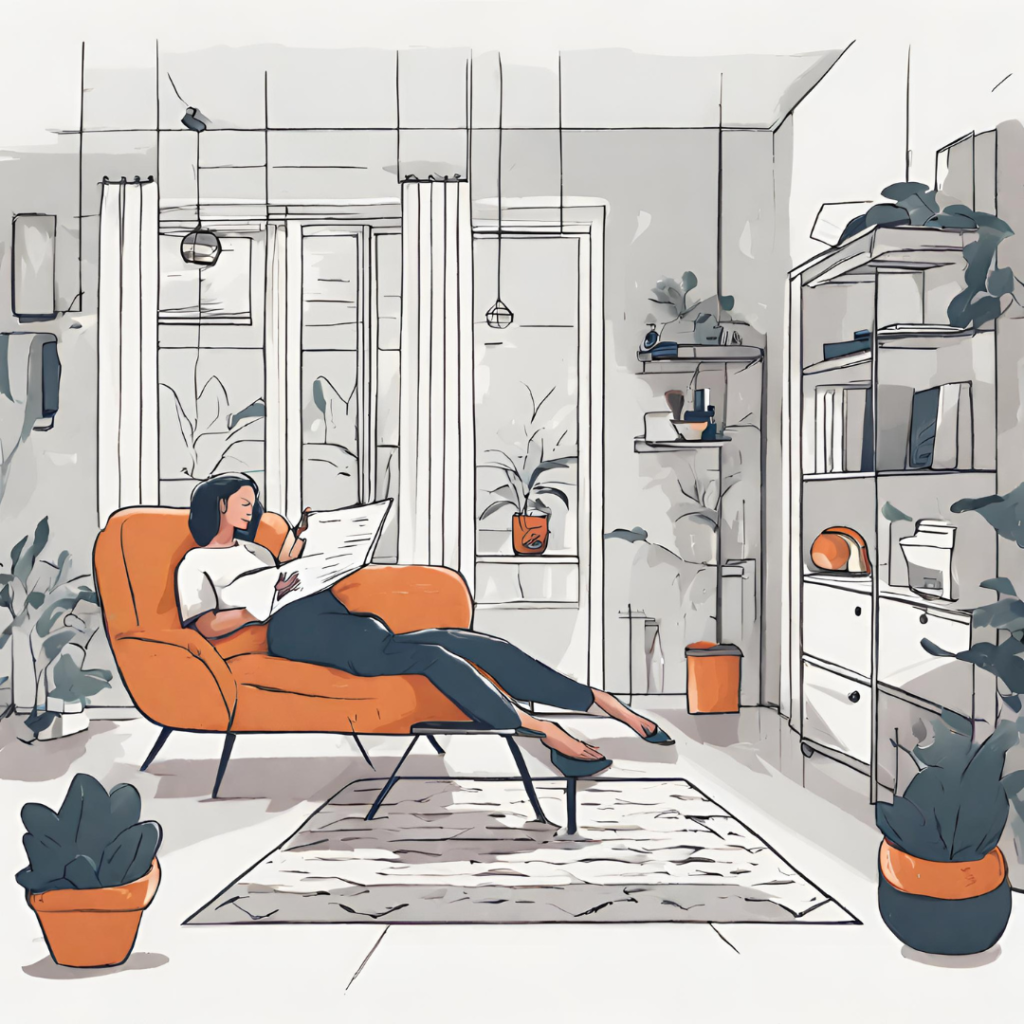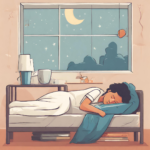In the relentless pace of today’s world, where stress and sleep deprivation are prevalent, napping emerges as a sanctuary of tranquility and rejuvenation. Creating the Ideal Napping Environment is not just about immediate gratification; it offers numerous health benefits, such as enhanced mood, increased creativity, improved memory retention, and reduced fatigue. The power of a nap, however, is contingent upon the optimal nap setting. In this comprehensive guide, we will navigate through the intricacies of crafting the perfect napping space to ensure that your slumbers are both restorative and revitalizing.
Understanding the Science of Napping for Better Rest
The science behind napping is not just about closing your eyes; it’s a deep dive into how restorative napping can be. The benefits of a nap extend beyond mere rest. The duration of a nap profoundly influences its advantages: short power naps lasting about 10-20 minutes prevent deep sleep, facilitating a quick and grogginess-free awakening. Conversely, longer naps of approximately 90 minutes encompass a full sleep cycle, including Rapid Eye Movement (REM) sleep, which is instrumental in boosting creative thinking and emotional memory.
Selecting the Right Location for Your Nap Haven
The journey to creating the ideal napping environment begins with the selection of an ideal location. This space should be a sanctuary of silence, privacy, and free from disruptions, such as a bedroom, a dedicated nap room, or a comfortable recliner in a secluded office corner. The essence is to identify a spot where you feel safe, at ease, and insulated from the outside world’s chaos.
Optimizing Lighting for Ideal Nap Conditions
Lighting is a crucial determinant of sleep quality. Our internal clocks, or circadian rhythms, are influenced by light, affecting melatonin production, the hormone responsible for sleep. To foster an optimal napping environment, the area should be dimly lit or dark. Employ blackout curtains, blinds, or a sleep mask to obstruct unwelcome light. If you prefer some luminosity, consider a lamp with adjustable brightness or a light source that mimics the warm tones of a setting sun.
Maintaining Comfortable Temperature in Your Napping Space
The temperature of your napping haven can significantly impact sleep quality. The sweet spot for sleep temperature is between 60-67 degrees Fahrenheit (15-19 degrees Celsius). A cooler environment aids the natural decrease in body temperature that occurs during sleep, signaling to your brain that it’s time to rest. Utilize fans, air conditioning, or heating to maintain a comfortable temperature, and select bedding made from breathable fabrics like cotton or linen to facilitate thermal comfort.
Ensuring Peaceful Ambiance through Noise Control
A peaceful environment is vital for uninterrupted rest. While total silence is preferred by some, others find solace in certain sounds, such as white noise or gentle nature melodies. Devices like white noise machines, sound apps, or even a fan can mask disruptive ambient noises. If complete silence is your preference, earplugs can be an effective solution to block out external disturbances.
Choosing Comfortable Bedding for Enhanced Nap Quality
In creating the ideal napping environment, the significance of your napping surface cannot be overstated. A high-quality mattress that supports your preferred sleeping posture, along with a pillow that maintains the natural curvature of your neck, is essential. Your bedding should be soft, inviting, and made from materials that promote breathability. For napping in non-traditional spaces like a chair or couch, ensure that it offers adequate support and comfort to your body.

Aromatherapy: Enhancing Your Napping Experience
The sense of smell plays a crucial role in establishing a restful napping atmosphere. Aromatherapy becomes an impactful tool in enhancing relaxation and sleep quality. Essential oils such as lavender, chamomile, and vanilla are renowned for their soothing effects. Employ diffusers, scented candles, or a few drops of essential oil on your pillow to infuse these calming scents into your napping space.
Establishing a Pre-Nap Routine for Optimal Rest
Cultivating a pre-nap routine can be a powerful cue for your body to unwind and prepare for rest in your ideal napping environment. This routine could encompass actions like dimming the lights, changing into comfortable attire, or engaging in relaxation techniques such as deep breathing or meditation. A consistent pre-nap ritual can train your body to transition into a relaxed state more rapidly.
Minimizing Distractions for Uninterrupted Napping
To guarantee that your nap is undisturbed in your perfect napping environment, it’s crucial to minimize potential distractions. Turn off or silence electronic devices, inform others not to disturb you, and attend to any needs (like using the restroom or eating a light snack) before you settle in for your nap. Creating a distraction-free environment enables you to relax fully and enjoy the benefits of your rest.
Timing Your Naps for Maximum Benefit
The timing of your nap is crucial in maximizing its restorative properties in the ideal napping environment. The ideal time for a nap is generally in the early to mid-afternoon, coinciding with a natural dip in energy levels. Avoid napping too late in the day as it can disrupt nighttime sleep. Utilizing an alarm can prevent oversleeping and help you awaken feeling refreshed and alert.
Personalizing Your Space for Ultimate Comfort
Tailoring your napping environment to your personal preferences can enhance its appeal and conduciveness to relaxation. Introduce elements that evoke comfort and tranquility, such as a beloved blanket, a cherished photograph, or a plush pillow. The aim is to create a space that resonates with you and fosters a sense of peace and calm in your ideal napping sanctuary.
The Role of Technology in Enhancing Your Nap Environment
In our tech-centric era, integrating technology into your napping environment can offer considerable benefits. Sleep-tracking apps can monitor your sleep cycles and rouse you during the lightest sleep phase, reducing grogginess. Sound machines emitting nature sounds or ambient noises can craft a serene atmosphere. Smart home devices can automate the adjustment of lighting and temperature according to your preferences, enhancing your napping experience.

Nutrition and Hydration for Better Sleep Quality
What you consume before napping can affect your rest quality in your optimal napping environment. Heavy meals, caffeine, and excessive liquids can hinder sleep, so choose light snacks that won’t disturb your stomach or bladder. Foods such as almonds or bananas are optimal. While it’s important to stay hydrated, be mindful of your fluid intake to avoid mid-nap bathroom visits.
Creating a Napping Habit for Consistent Rest
Consistency is the cornerstone of reaping the full benefits of napping in your ideal napping environment. Aim to nap at the same time every day to regulate your body’s internal clock. This regularity will facilitate quicker sleep onset and more rejuvenating naps.
The Mental Aspect of Effective Napping
Your mindset is a pivotal factor in effective napping. Embrace napping as a positive and restorative act. Release any guilt associated with taking a break, viewing it as a valuable contribution to your health and productivity.
Conclusion: Fostering an Ideal Napping Environment
Creating the perfect napping environment is a holistic pursuit, encompassing physical, environmental, and psychological dimensions. By addressing factors such as location, lighting, temperature, noise, comfort, aromatherapy, technology, nutrition, and mindset, you can forge a haven that supports restful naps. Embrace the art of napping—it’s a modest indulgence with profound implications for your health, mood, and productivity. Relish in the tranquility and rejuvenation that a meticulously crafted ideal napping environment can offer.


